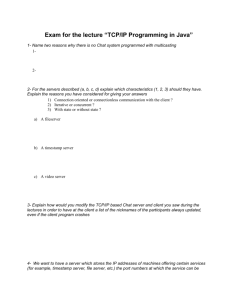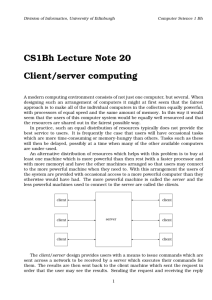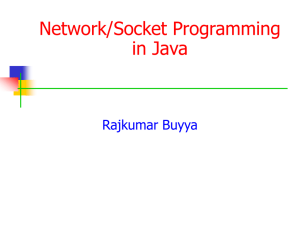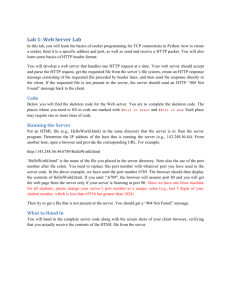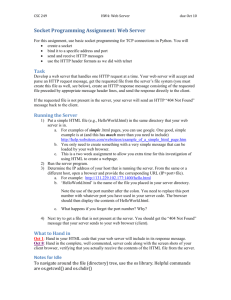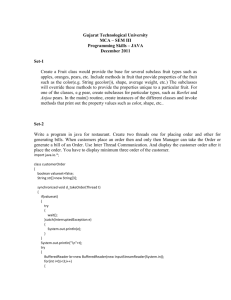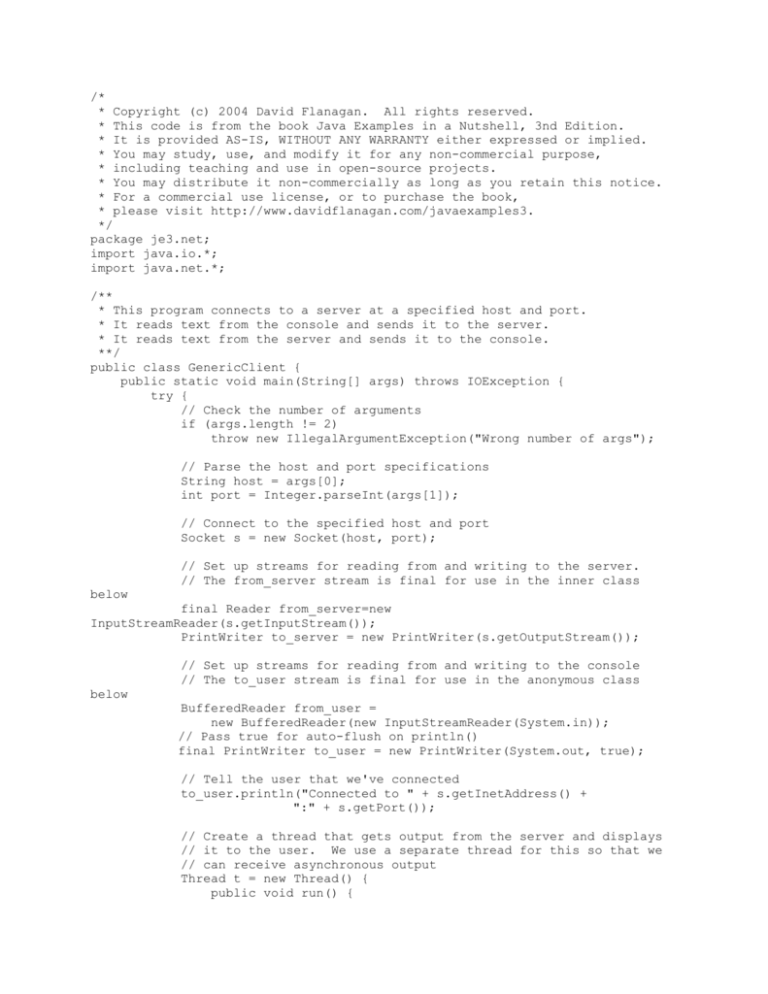
/*
* Copyright (c) 2004 David Flanagan. All rights reserved.
* This code is from the book Java Examples in a Nutshell, 3nd Edition.
* It is provided AS-IS, WITHOUT ANY WARRANTY either expressed or implied.
* You may study, use, and modify it for any non-commercial purpose,
* including teaching and use in open-source projects.
* You may distribute it non-commercially as long as you retain this notice.
* For a commercial use license, or to purchase the book,
* please visit http://www.davidflanagan.com/javaexamples3.
*/
package je3.net;
import java.io.*;
import java.net.*;
/**
* This program connects to a server at a specified host and port.
* It reads text from the console and sends it to the server.
* It reads text from the server and sends it to the console.
**/
public class GenericClient {
public static void main(String[] args) throws IOException {
try {
// Check the number of arguments
if (args.length != 2)
throw new IllegalArgumentException("Wrong number of args");
// Parse the host and port specifications
String host = args[0];
int port = Integer.parseInt(args[1]);
// Connect to the specified host and port
Socket s = new Socket(host, port);
// Set up streams for reading from and writing to the server.
// The from_server stream is final for use in the inner class
below
final Reader from_server=new
InputStreamReader(s.getInputStream());
PrintWriter to_server = new PrintWriter(s.getOutputStream());
// Set up streams for reading from and writing to the console
// The to_user stream is final for use in the anonymous class
below
BufferedReader from_user =
new BufferedReader(new InputStreamReader(System.in));
// Pass true for auto-flush on println()
final PrintWriter to_user = new PrintWriter(System.out, true);
// Tell the user that we've connected
to_user.println("Connected to " + s.getInetAddress() +
":" + s.getPort());
// Create a thread that gets output from the server and displays
// it to the user. We use a separate thread for this so that we
// can receive asynchronous output
Thread t = new Thread() {
public void run() {
char[] buffer = new char[1024];
int chars_read;
try {
// Read characters from the server until the
// stream closes, and write them to the console
while((chars_read = from_server.read(buffer)) != -1)
{
to_user.write(buffer, 0, chars_read);
to_user.flush();
}
}
catch (IOException e) { to_user.println(e); }
// When the server closes the connection, the loop above
// will end. Tell the user what happened, and call
// System.exit(), causing the main thread to exit along
// with this one.
to_user.println("Connection closed by server.");
System.exit(0);
}
};
// Now start the server-to-user thread
t.start();
// In parallel, read the user's input and pass it on to the
server.
String line;
while((line = from_user.readLine()) != null) {
to_server.print(line + "\r\n");
to_server.flush();
}
//
//
//
//
If the user types a Ctrl-D (Unix) or Ctrl-Z (Windows) to end
their input, we'll get an EOF, and the loop above will exit.
When this happens, we stop the server-to-user thread and close
the socket.
s.close();
to_user.println("Connection closed by client.");
System.exit(0);
}
// If anything goes wrong, print an error message
catch (Exception e) {
System.err.println(e);
System.err.println("Usage: java GenericClient <hostname>
<port>");
}
}
}
/*
* Copyright (c) 2004 David Flanagan. All rights reserved.
* This code is from the book Java Examples in a Nutshell, 3nd Edition.
* It is provided AS-IS, WITHOUT ANY WARRANTY either expressed or implied.
* You may study, use, and modify it for any non-commercial purpose,
* including teaching and use in open-source projects.
* You may distribute it non-commercially as long as you retain this notice.
* For a commercial use license, or to purchase the book,
* please visit http://www.davidflanagan.com/javaexamples3.
*/
package je3.net;
import java.io.*;
import java.net.*;
/**
* This program is a very simple Web server. When it receives a HTTP request
* it sends the request back as the reply. This can be of interest when
* you want to see just what a Web client is requesting, or what data is
* being sent when a form is submitted, for example.
**/
public class HttpMirror {
public static void main(String args[]) {
try {
// Get the port to listen on
int port = Integer.parseInt(args[0]);
// Create a ServerSocket to listen on that port.
ServerSocket ss = new ServerSocket(port);
// Now enter an infinite loop, waiting for & handling
connections.
for(;;) {
// Wait for a client to connect. The method will block;
// when it returns the socket will be connected to the client
Socket client = ss.accept();
// Get input and output streams to talk to the client
BufferedReader in = new BufferedReader(
new InputStreamReader(client.getInputStream()));
PrintWriter out = new PrintWriter(client.getOutputStream());
// Start sending our reply, using the HTTP 1.1 protocol
out.print("HTTP/1.1 200 \r\n");
// Version & status
code
out.print("Content-Type: text/plain\r\n"); // The type of
data
out.print("Connection: close\r\n");
// Will close
stream
out.print("\r\n");
// End of headers
// Now, read the HTTP request from the client, and send it
// right back to the client as part of the body of our
// response. The client doesn't disconnect, so we never get
// an EOF. It does sends an empty line at the end of the
// headers, though. So when we see the empty line, we stop
// reading. This means we don't mirror the contents of POST
// requests, for example. Note that the readLine() method
// works with Unix, Windows, and Mac line terminators.
String line;
while((line = in.readLine()) != null) {
if (line.length() == 0) break;
out.print(line + "\r\n");
}
// Close socket, breaking the connection to the client, and
// closing the input and output streams
out.close();
// Flush and close the output stream
in.close();
// Close the input stream
client.close(); // Close the socket itself
} // Now loop again, waiting for the next connection
}
// If anything goes wrong, print an error message
catch (Exception e) {
System.err.println(e);
System.err.println("Usage: java HttpMirror <port>");
}
}
}


